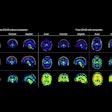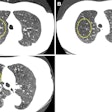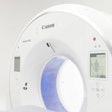
NEW YORK (Reuters Health), Nov 27 - Brown adipose tissue (BAT) is much more active in humans during the winter than in the summer, according to a report in the November issue of Diabetes.
Whereas white adipose tissue "acts as a chemical store and an insulator," brown adipose tissue metabolizes triglycerides for heat production, helping mammals to stay warm without having to shiver, the authors explain.
The "very striking seasonal variation" had more to do with changes in photoperiod than temperature shifts, Dr. Michael E. Symonds of University Hospitals in Nottingham, UK and colleagues found. "To our knowledge," they write, "this is the largest study of its kind documenting the distribution of active BAT in multiple depots in adults and how BAT varies with season."
"The success or failure of pharmacological interventions aimed at weight loss in obesity could depend on the capacity of BAT to burn excess energy," Dr. Symonds and colleagues write. "This raises the question as to whether the greater quantity of BAT we possess during the winter could be used to promote fat mobilization at this time of year."
Dr. Symonds and his team looked at 3,614 patients who underwent computed and positron emission tomography, mostly for cancer staging purposes. They identified BAT activity on the scans of 167 patients, and assessed variation in BAT expression in patients who had serial scans. Overall, 2.5% of scans showed BAT activity in summer, while 7.2% did in winter.
There was a highly significant gender difference: 2.8% of men had BAT activity, versus 7.2% of females. Patients with BAT activity tended to have lower body mass indices and were less likely to be obese than people with no BAT activity.
BAT activity showed strong seasonal and month-to-month variation, as did the proportion of people scanned who had this activity. For example, the average number of individual BAT depots recorded in people with any BAT activity peaked in winter at 20, while the average number of depots in summer was nine.
The number of patients with BAT activity was also correlated with night length and average temperature. And the activity of BAT also showed seasonal variation; as measured by standardized uptake value, BAT activity was about four-fold greater in winter than summer. Some patients with no detectable BAT in summer did have active BAT in winter.
Finding a way to recruit BAT activity in obese people could help in the development of new ways to promote weight loss, the authors conclude.
Diabetes 2009;58:2583-2587.
Last Updated: 2009-11-25 10:00:25 -0400 (Reuters Health)
Related Reading
PET/CT confirms presence of brown fat in adults, April 22, 2009
Copyright © 2009 Reuters Limited. All rights reserved. Republication or redistribution of Reuters content, including by framing or similar means, is expressly prohibited without the prior written consent of Reuters. Reuters shall not be liable for any errors or delays in the content, or for any actions taken in reliance thereon. Reuters and the Reuters sphere logo are registered trademarks and trademarks of the Reuters group of companies around the world.

















